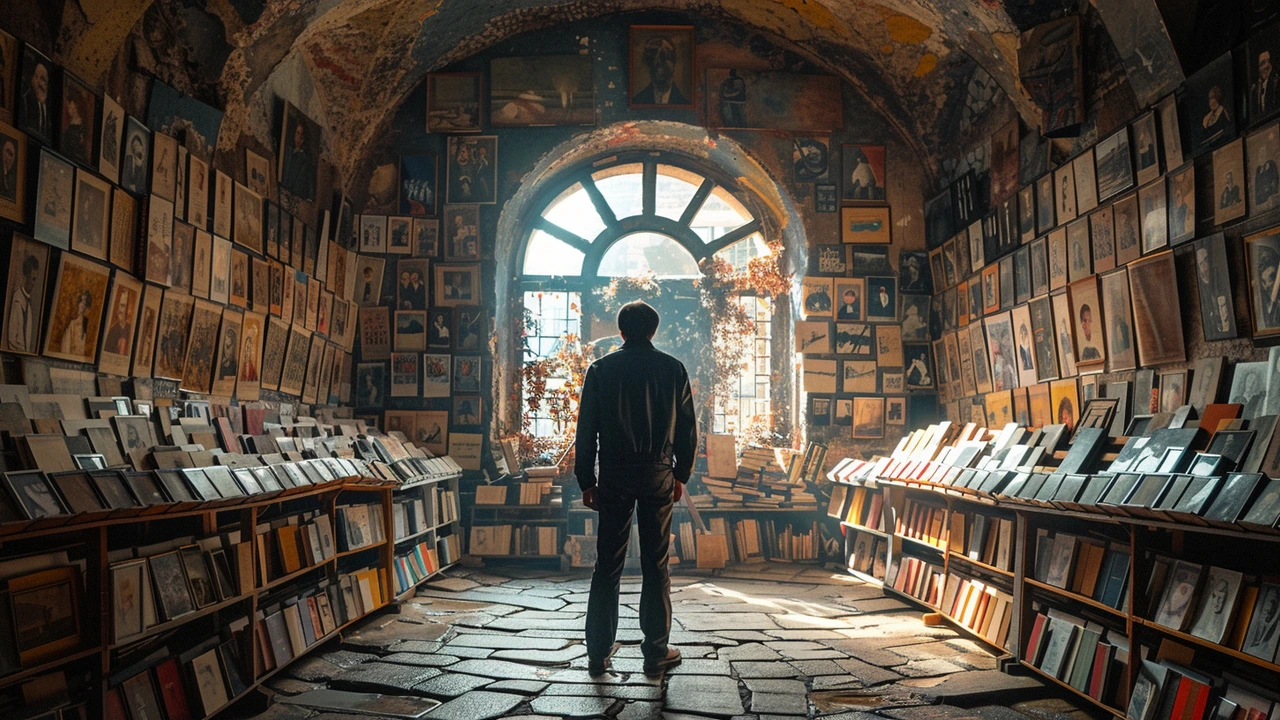The Dawn of Cubism: Origins and Foundational Figures
Cubism, an avant-garde art movement that emerged in the early 20th century, significantly altered the course of art history. The inception of Cubism can be pinpointed to around 1907, with artists Pablo Picasso and Georges Braque at the helm. This movement represented a radical shift in artistic perspective, challenging conventional forms and perspectives that had dominated art for centuries.
Picasso's Les Demoiselles d'Avignon is often cited as the catalyst for Cubism. The painting showcased a bold departure from traditional perspective, featuring fragmented and abstracted figures. This was not just about depicting reality; it was a quest to represent the world from multiple viewpoints, to capture the essence of objects in a more comprehensive manner.
Meanwhile, Georges Braque's contributions were equally pivotal. His experimentation with texture and perspective played a significant role in the development of Cubism. Together, Picasso and Braque engaged in what can best be described as an artistic dialogue, pushing each other towards further innovation. Their collaboration was foundational, setting the groundwork for what would become one of the most revolutionary art movements in history.
The Evolution of Cubism: Analytic and Synthetic Phases
Cubism's evolution can broadly be divided into two phases: Analytic Cubism and Synthetic Cubism. Analytic Cubism, the movement's first phase, focused on deconstructing objects into their basic geometric components and representing them from multiple viewpoints on a two-dimensional surface. This phase was characterized by muted color palettes and complex, overlapping planes.
Synthetic Cubism, on the other hand, marked a shift toward simpler shapes and brighter colors. It introduced collage elements, using mixed media such as newspapers and painted paper to create compositions. This phase represented a move away from the abstraction of Analytic Cubism towards a synthesis of forms and a reintroduction of the signifier in the artwork.
The transition between these two phases was gradual, reflecting artists' exploration of the balance between form and meaning, abstraction and representation. This period of Cubism also saw contributions from artists like Fernand Léger and Juan Gris, who added their unique interpretations and helped broaden the scope of the movement.
Cubism's Impact on Art and Beyond
Cubism's influence extended well beyond the canvases of Picasso and Braque. It played a pivotal role in the development of modern art, influencing a wide range of movements and artists across the globe. From the abstract works of Piet Mondrian and the futurist compositions of Umberto Boccioni to the constructivist designs of Vladimir Tatlin, Cubism's emphasis on abstract form and multiple perspectives opened new avenues for artistic expression.
Moreover, Cubism didn't just impact visual art; it also left its mark on architecture, literature, and music. Its principles of fragmentation and abstraction found echoes in the fragmented narratives of modernist literature and the atonal structures of contemporary music, illustrating the movement's wide-reaching influence.
At its core, Cubism challenged artists to think outside traditional constraints, to see the world not as it appears, but as it could be interpreted and reimagined. This legacy of innovation and experimentation continues to inspire artists today, cementing Cubism's place as a transformative force in the history of art.
Exploring Cubism Today: Its Lasting Influence and Where to See It
Today, Cubism's legacy is alive and well, with its principles still influencing modern and contemporary art. Museums and galleries around the world house collections featuring Cubist works, offering a glimpse into the revolutionary spirit of the movement.
For those interested in exploring Cubism further, institutions like the Museum of Modern Art in New York, the Reina Sofia Museum in Madrid, and the Centre Pompidou in Paris feature extensive collections of Cubist art. These venues offer a comprehensive look at the movement's evolution, showcasing works from its major figures as well as lesser-known artists who contributed to its development.
In addition to traditional museums, Cubism's influence can also be explored through the lens of contemporary artists who continue to draw inspiration from its principles. From abstract compositions that echo Cubist fragmentation to modern takes on collage, the spirit of Cubism continues to resonate, underlining the movement's enduring relevance and its role in shaping the course of art history.


